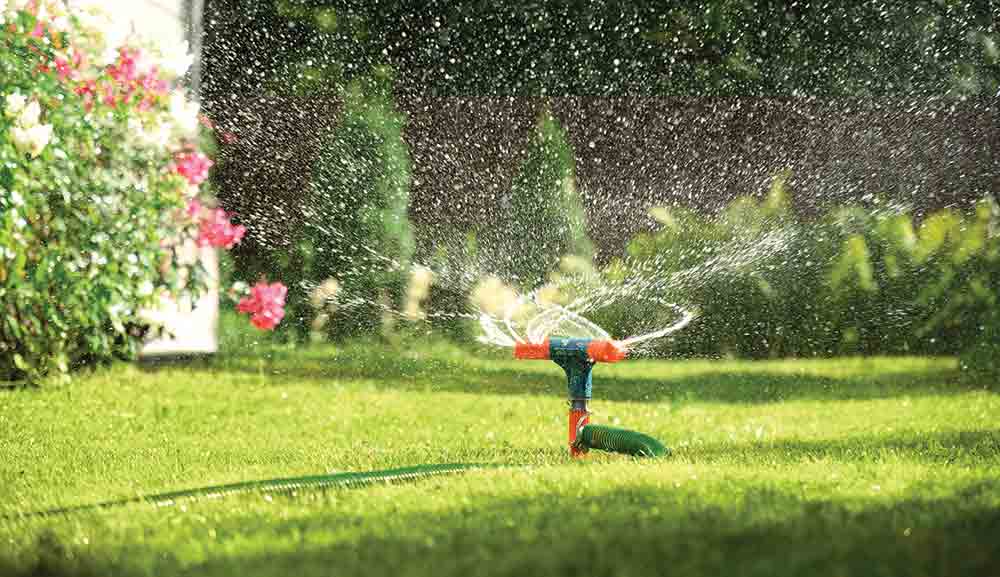
By Greg Grant
Texas A&M AgriLife Extension Smith County Horticulture Agent
It’s officially summertime … hot and dry. Water is a limited resource in Texas, and it will become more limited as the population grows. Homeowners can conserve a significant amount of water with no loss in grass quality by learning to water their lawns properly. Most homeowners (and businesses as well) water their lawns far too frequently, leading to shallow roots and increased disease.
The type of turfgrass you have determines how drought-tolerant it is. Being from Africa, Bermuda grass is the most drought-tolerant, followed by zoysia grass, then centipede and St. Augustine which require the most water.
The time of year also influences irrigation needs. During the summer, when temperatures are high and days are long, lawns generally need supplemental watering. As a rule, lawns in East Texas need one inch of water, applied once a week during the months of June, July and August only. That’s a total of only twelve applications a year. The rest of the year when it’s not so hot, our normal rainfall generally sustains them.
Rather than watering on the same schedule each week (or while it’s raining), adjust your watering schedule manually, according to the weather. Irrigate deeply. Then wait until the grass begins to show signs of drought stress before watering again. If it doesn’t show marginal drought stress, it should not be irrigated. Symptoms of drought stress include grass leaves turning a dull, gray-green color, leaf blades rolling or folding, and footprints that remain in the grass after walking across the lawn. To properly time watering, look for the area of the lawn that shows water stress first. Water the entire lawn when that area begins to show symptoms. A lawn that is watered deeply should generally be able to go a week between watering (or rainfall). Established lawns with deep, extensive root systems can be watered less often. Some years I don’t irrigate my lawn at all.
Early morning is the best time to water. Wind and temperatures are usually the lowest of the day, and water pressure is generally good. That allows water to be applied evenly and with little loss from evaporation. Watering late in the evening, or at night, causes leaves to remain wet for an extended period, which increases the chance for disease, especially brown patch (large patch) and gray leaf spot on St. Augustine and dollar spot on Bermuda and zoysia.
Thoroughly wet the soil to a depth of six inches with each watering. Shallow watering produces weak, shallow-rooted grass that is more susceptible to drought stress. Soil type, sprinkler heads and water pressure determine how much water is needed to wet the soil to a depth of six inches and how long a sprinkler must run. Baby food jars, tuna fish/cat food cans, or similar containers can be spaced around the lawn to see how much water is being applied and a hole dug with a sharpshooter shovel will expose how deep the water is penetrating. From personal observation, most homeowners water too frequently (encouraging disease) and don’t apply near enough water with each application resulting in shallow rooted lawns prone to drought stress.









Comment
Comments